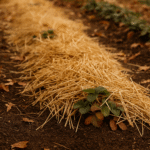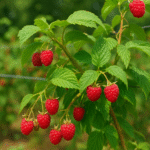Strawberry plants are a staple in every garden, the berries are a delicious summer fruit beloved by all. Unfortunately the ‘all’ also includes unwanted pests in your garden.
Last year our large dedicated strawberry bed was matured and produced a ton of berries. However we went through a season fighting off countless pests eating our beloved strawberries. I know firsthand how extremely annoying and heartbreaking it is to watch a little berry grow, turn from white to pink to red and then get eaten the morning of picking.
In this article I will outline all the tricks used to prevent pests of all kinds from getting in your garden bed – as well as what worked for us and what didn’t work.
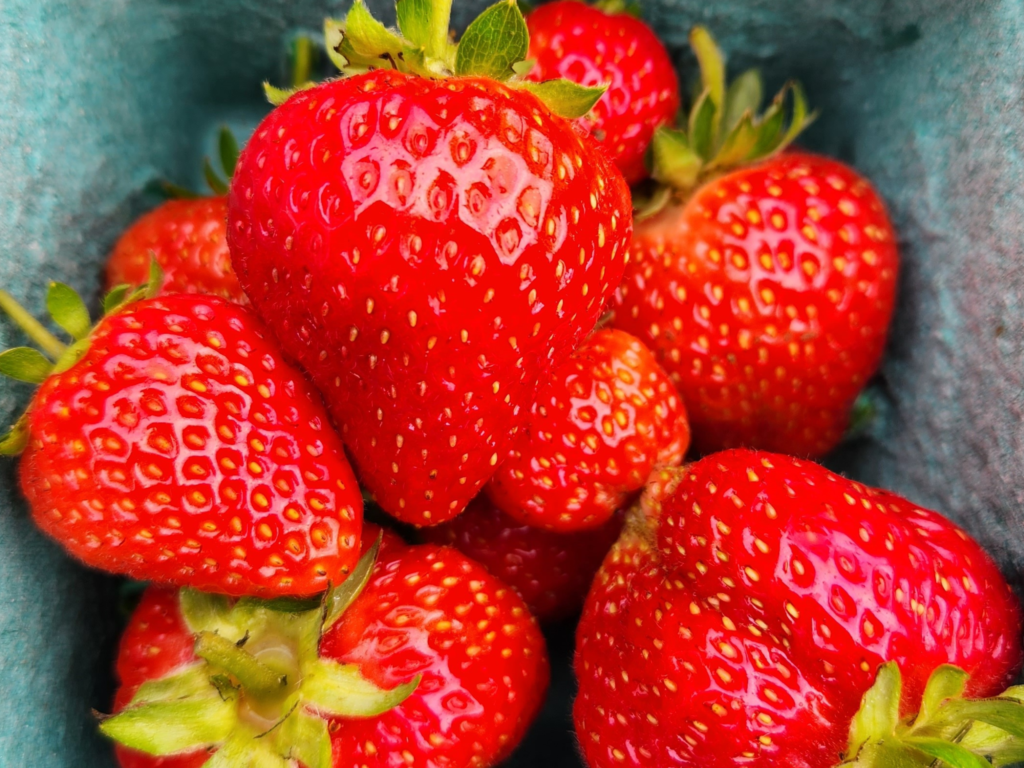
Painted Red Rocks
This is probably the most common trick used to keep animals – particularly birds, from eating your strawberries. It’s very simple, find rocks that are roughly the size of a strawberry and paint it to look like a strawberry.
Place the painted rocks around your plants where they would be visible from a distance. It’s best to do this during the spring before any berries actually produce in your garden bed.
The theory is that birds or other animals will see the red rocks, try to bite it or take it, and realize that it’s not food. The animals will typically try a few times and once they decide it’s not food, they will leave the bed alone never to return.

My Opinion on Painted Rocks
Doesn’t Work – I’ve tried this for years and it never worked. I tried it in a hanging basket, I tried it in a garden bed and both times the birds and/or other animals would still come back and eat my strawberries.
However – I think it’s possible to try this method WITH the other preventative methods, just not on it’s own.
Mesh Netting
Mesh netting can be applied in a number of ways and sometimes it’s called, bird netting or row covers. Our strawberry bed is against the side of our greenhouse, so we’ve draped the mesh netting over the bed and used rocks to hold it down so animals (like rabbits) can not get in.
For raised beds, mesh netting would require some PVC pipe or anything that can create an arch that can go over your bed. Drape the netting over the arches and find something to hold it down so the wind doesn’t carry it away.
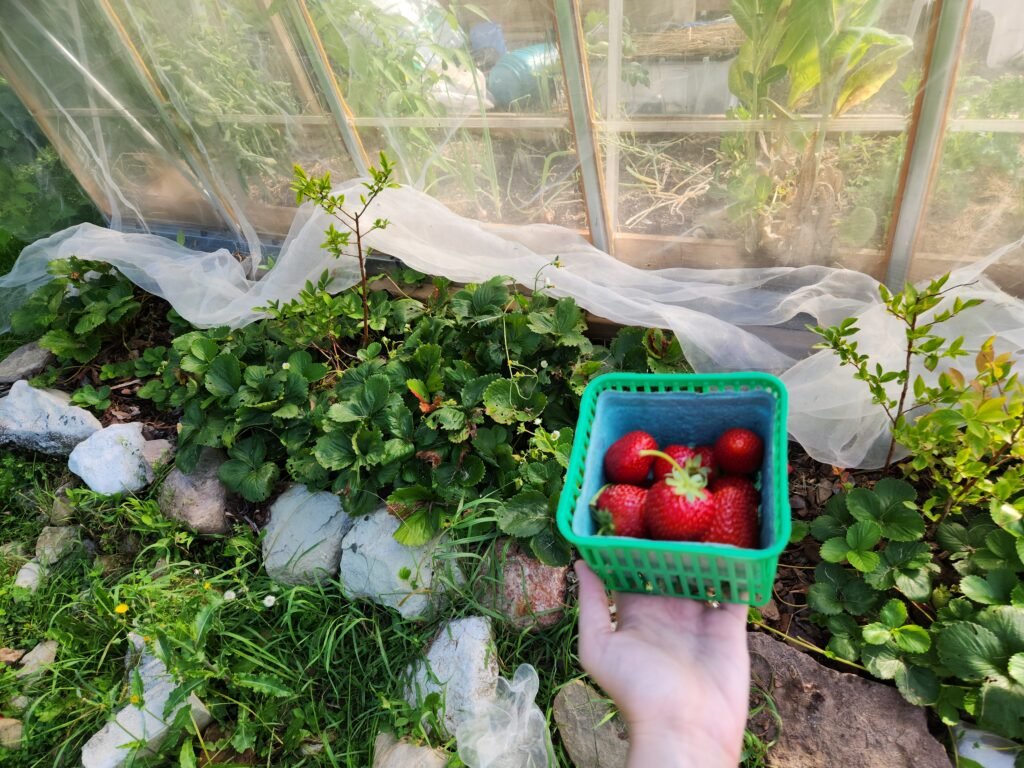
My Opinion on Mesh Netting
This is the ONLY 100% fool-proof method for keeping your strawberries safe from pests. I tried many methods before this one and its the only one that kept them safe.
Sacrifice Crops
This is a generic trick that can be used for the entire garden. Even though your garden is protected with mesh netting, row covers, perhaps even chicken wire, sometimes animals will still figure out a way to get in and eat your food. Using a sacrifice crop on the edge of your garden that is unprotected (unlike the rest of your plants) is a great way to keep the animals busy with other food.
My Opinion on Sacrifice Crops
This is a great method if you have the space. We learned this accidentally when we had our wheat bed exposed instead of the strawberries, (we lost a least a quarter of our harvest that year). We still had the strawberry’s mesh netting and and other protections against the pests, but we noticed a significant decrease in attempts when the wheat was soft and creamy (before it can be harvested – perfect for animals).
Ground Wire To Keep Strawberries Off The Ground
A trick gardeners use when their strawberries grow on the ground is to lift them off the ground using a bit of wire for elevation and airflow. This is to protect your strawberries from very small pests, micro-organisms in the dirt, and protect them from getting moldy.

My Opinion on Ground Wire
It does prevent it from the ground micro-organisms, but it doesn’t prevent it from other pests like ants or beetles. I would still 100% recommend this method too as it does protect some of your strawberries.
Beer Traps for Slugs
Slugs are a very annoying pest that can commonly be found in strawberry beds. They come out when it’s very soggy and wet out for numerous days. However, the slugs don’t eat the berries – they just go for the leaves. It’s good news that your strawberries are safe, but if the leaves are eaten the plant will not get the nutrients it needs to produce.
This trick is simple as well, dig a hole in your garden bed near the problem area. Place an open plastic cup in the ground so the top is an inch or less from the ground. Then fill the container with beer and wait. The next morning slugs will have decided to feast on the sweet beverage rather than your strawberry leaves.
My Opinion on Beer Traps
This works! This is a great method for reducing the amount of slugs in your garden bed. It also works for other plants like kale, lettuce, beets, radishes and more.
Salt for Slugs
Throwing salt on slugs when they’re already present in your strawberry bed is a spot treatment remedy. The salt causes the to seize up and die.
My Opinion on Salt for Slugs
It works as a good spot treatment to kill slugs that didn’t want to go in the beer.
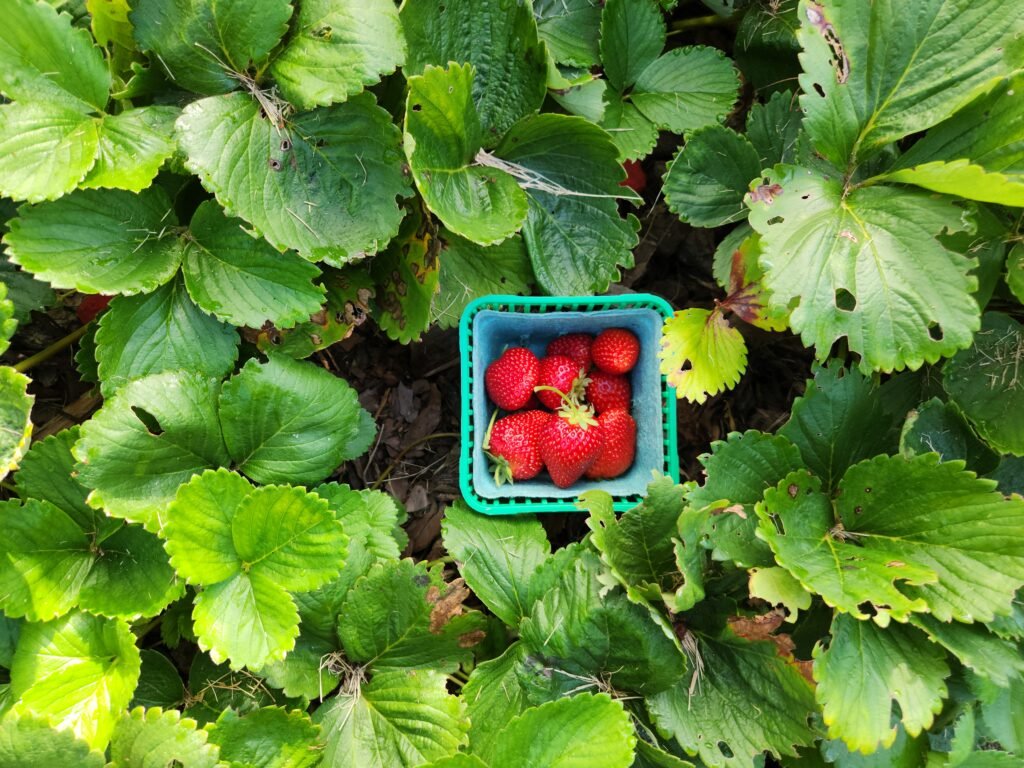
Conclusion
This in a semi-comprehensive list I’ve put together and gathered over the years of gardening strawberries. To quickly review it:
- Painted red rocks – doesn’t work well
- Mesh netting – 100% works and the only fool-proof method for protection
- Sacrifice crops – great if you have the space, not fully guaranteed to work
- Ground wire – 100% works to keep berries from getting eaten by micro-organisms
- Beer traps for slugs – works amazing for strawberries and other plants in the garden
- Salt for slugs – works instantly as a spot treatment
If there are more pests and protection techniques you’re aware of, please comment your solutions below!
We hope you enjoyed this article about protecting your strawberry bed from pests. If you did make sure you check out the other growing guides that we have, including our seed saving guides. We are growing our website with more articles all the time, and we invite you to grow with us.

